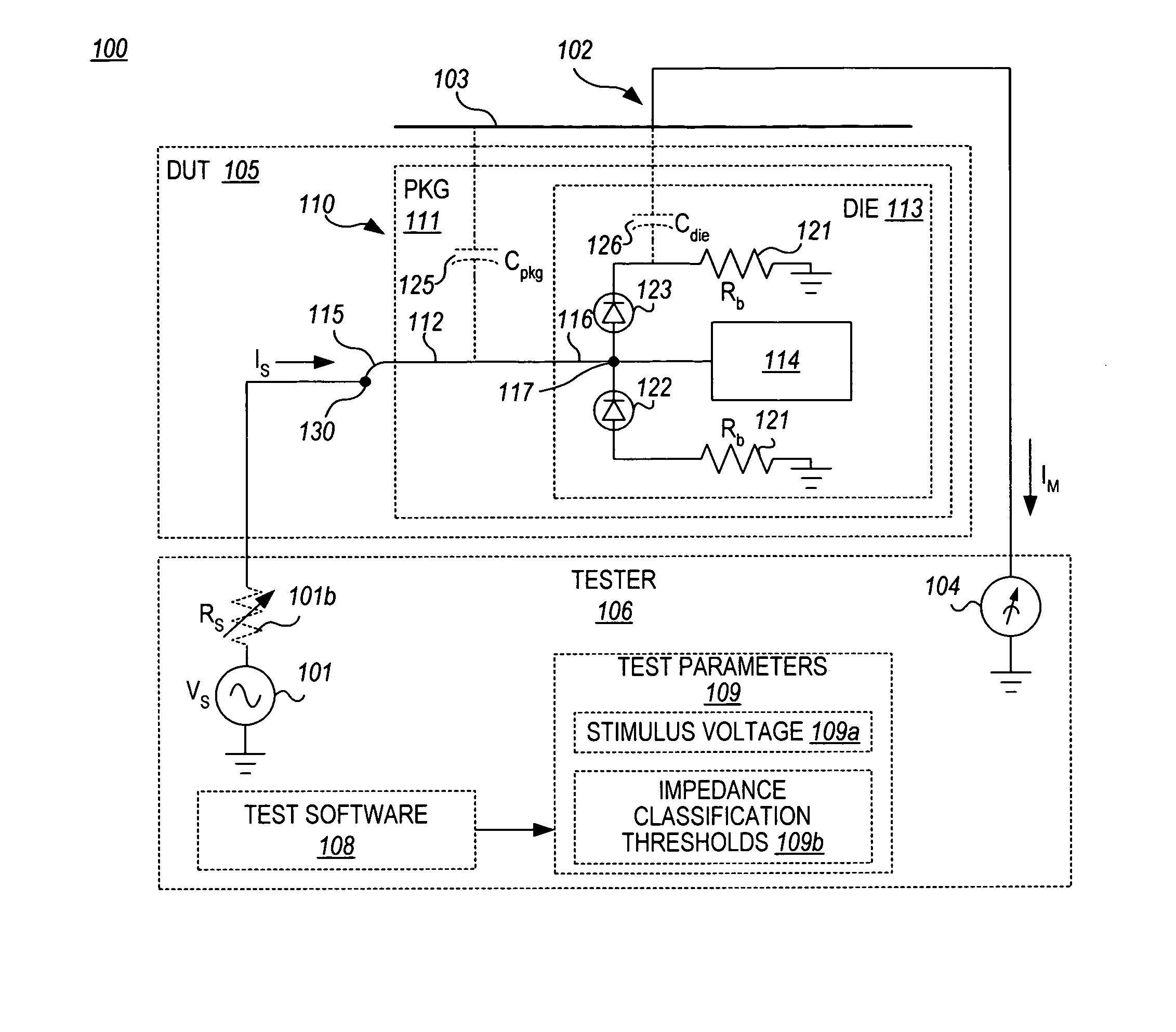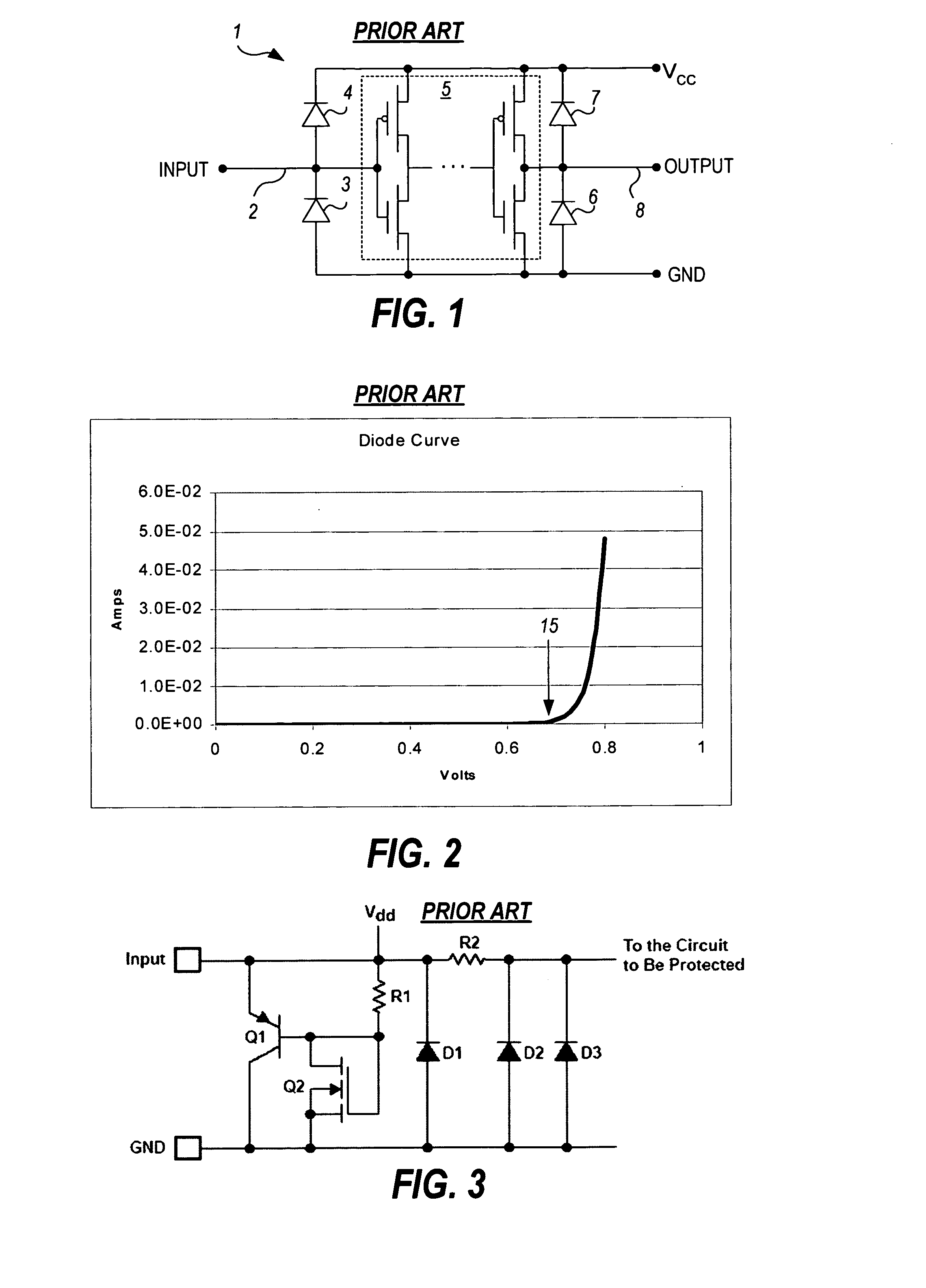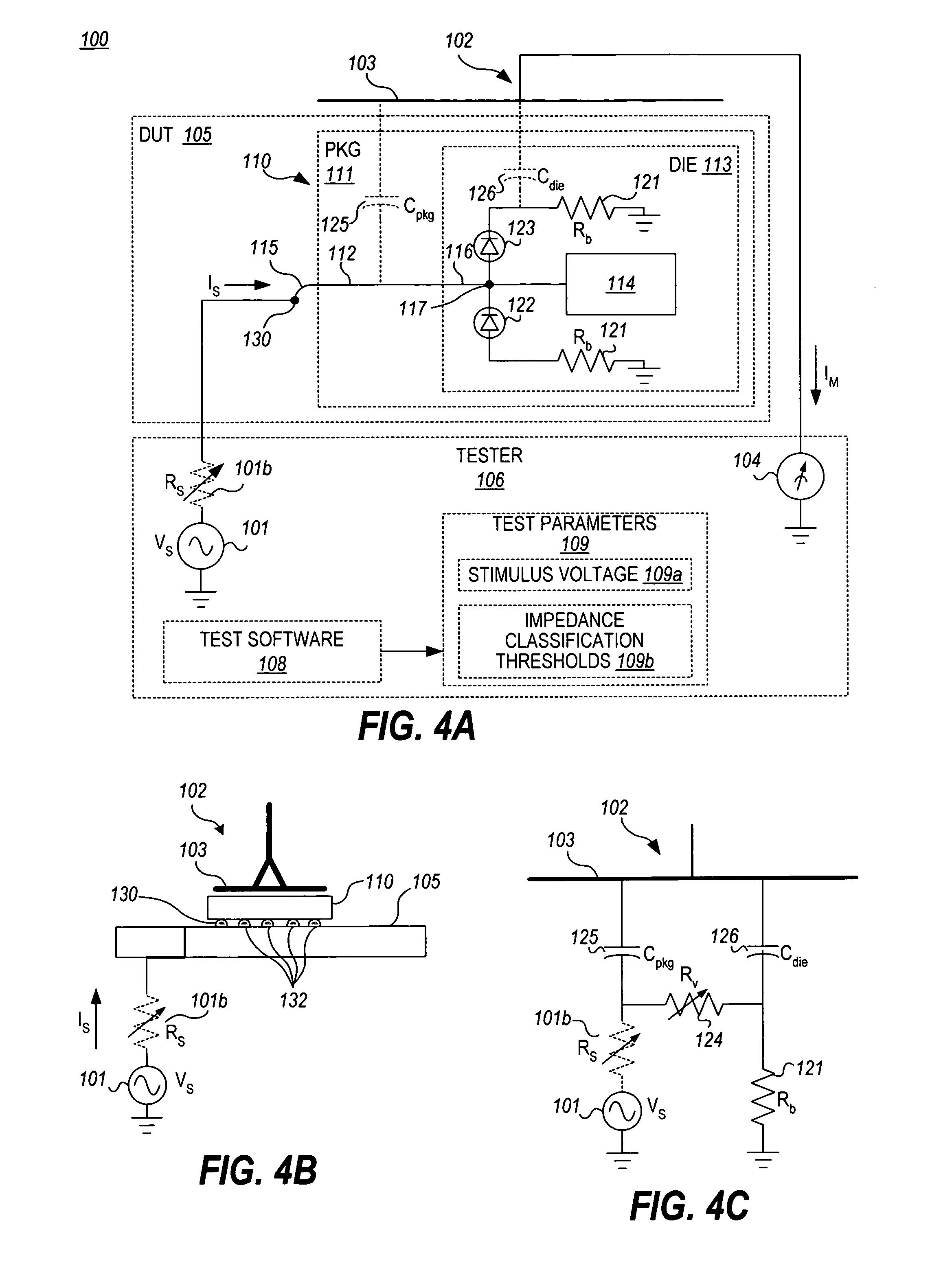Method for non-contact testing of marginal integrated circuit connections
a technology of integrated circuits and connections, applied in the direction of electric connection testing, measurement devices, instruments, etc., can solve the problems of inability to test the ic device being tested, inability to use a single universal value of the stimulus voltage applied to all nodes under capacitive lead-frame test of the device, and inability to accurately test the capacitive lead-frame. the effect of resistive connections
- Summary
- Abstract
- Description
- Claims
- Application Information
AI Technical Summary
Benefits of technology
Problems solved by technology
Method used
Image
Examples
Embodiment Construction
[0043]For simplicity and illustrative purposes, the principles of the embodiments are described. Moreover, in the following detailed description, references are made to the accompanying figures, which illustrate specific embodiments. Electrical, mechanical, logical and structural changes may be made to the embodiments without departing from the spirit and scope of the embodiments.
[0044]As used herein, the term “node” refers to the conductive portion of an electrical device that forms a single electrical point in the equivalent schematic diagram of the electrical device. For example, a node can be a pad of an integrated circuit die, a pin, a wire, a solder bump, or other interconnecting joint of an integrated circuit device, a pad or trace of a printed circuit board, an interconnecting joint of a component on the printed circuit board, or any combination thereof. For purposes of simplicity of description, whenever the term “node” is used in conjunction with a particular portion of an...
PUM
 Login to View More
Login to View More Abstract
Description
Claims
Application Information
 Login to View More
Login to View More - R&D
- Intellectual Property
- Life Sciences
- Materials
- Tech Scout
- Unparalleled Data Quality
- Higher Quality Content
- 60% Fewer Hallucinations
Browse by: Latest US Patents, China's latest patents, Technical Efficacy Thesaurus, Application Domain, Technology Topic, Popular Technical Reports.
© 2025 PatSnap. All rights reserved.Legal|Privacy policy|Modern Slavery Act Transparency Statement|Sitemap|About US| Contact US: help@patsnap.com



